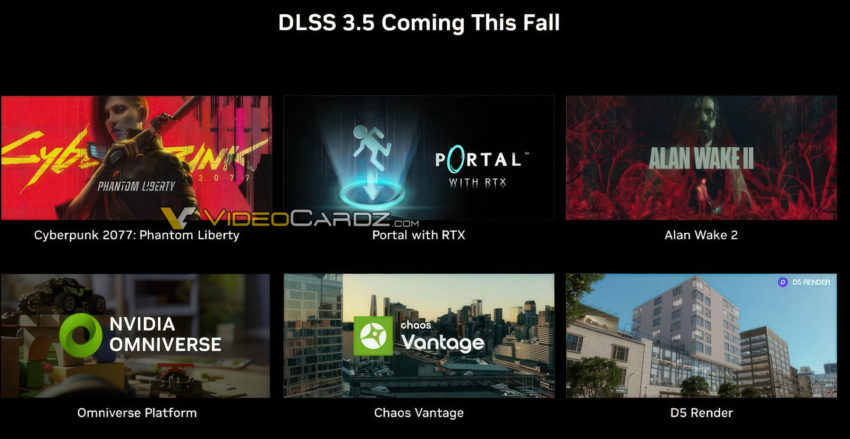DLSS scaling technology has come a long way. Although there were many issues in the first version in 2019, most of them were fixed in the much improved version of DLSS 2, which was released a year later. Last year we saw DLSS 3, which didn’t bring much improvement in scaling, but includes an entirely new frame generation technology that can generate “false frames” and thus increase the smoothness of the gameplay by increasing the input data. backlog. Less than a year after this big release, Nvidia is introducing DLSS 3.5, another update that brings brand new technology.
While there hasn’t been an official announcement yet at the time of writing, Videocardz magazine has published the description and accompanying images directly from Nvidia, so we probably won’t have to wait long. New to DLSS 3.5 is Ray Reconstruction (RR), which is supposed to provide better visual quality for ray tracing. In games, it can suffer from various noises and other artifacts that various denoisers try to suppress, but not always successfully. RR should do its job, but much better. Below you can see a comparison of DLSS 3.5 (DLSS 2 + Frame Generation + Ray Reconstruction) with native resolution.
Nvidia boasts that DLSS 3.5 was trained on five times as much data as DLSS 3. It must include data from the engine, can recognize different types of ray tracing, and tell a good pixel from a bad one. In any case, the downside would be that this will likely be an exclusive technology for the RTX 40 series, although this has yet to be confirmed.
While this is supposed to be a technology to improve image quality, it should also offer a slight performance boost, see Nvidia’s comparison below.

DLSS 3.5 is set to hit the first games this fall, particularly in Portal with RTX, Cyberpunk 2077: Phantom Liberty, and Alan Wake 2. At the same time, it will make its way into Omniverse, Chaos Vantage, and D5 render programs.

Source :Indian TV



